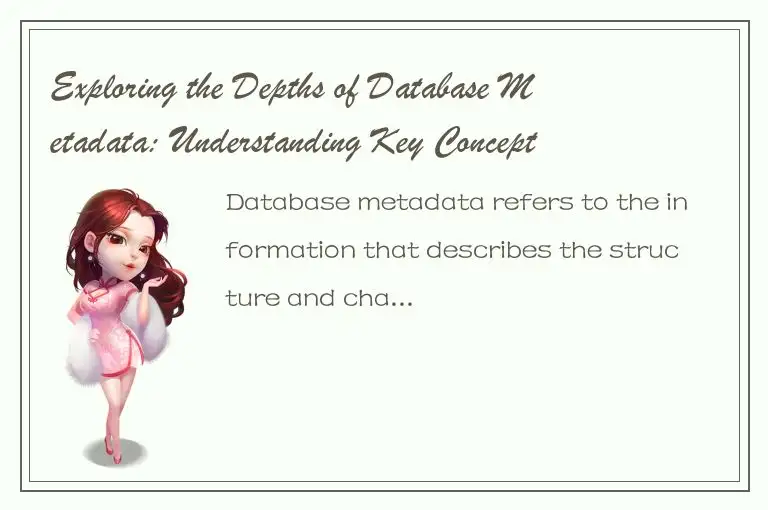Database metadata refers to the information that describes the structure and characteristics of a database. It includes data about the database schema, tables, columns, and indexes. Understanding database metadata is essential for efficient database management and application development. In this article, we will explore the key concepts and applications of database metadata.

Database metadata types
Database metadata can be classified into two types: structural metadata and descriptive metadata.
Structural metadata describes the structure of the database, including tables, columns, indexes, and relationships among them. It defines how the data is organized and accessed by the database management system. Structural metadata is essential for database administrators, as it provides a comprehensive view of the database schema.
Descriptive metadata, on the other hand, provides information about the data stored in the database. It includes data types, constraints, and other attributes that define the characteristics of the data. Descriptive metadata is useful for application developers and end-users, as it helps them understand the meaning and constraints of the data.
Database metadata applications
Database metadata has several applications in database management and application development. Some of the key applications are discussed below.
Database design
The database design process involves creating a database schema that defines the structure of the database. Database metadata provides the necessary information to create the schema, including the table and column definitions, primary and foreign keys, and indexes. Database designers can use this information to create a well-optimized schema that meets the needs of the application.
Query optimization
Query optimization is the process of improving the performance of database queries by minimizing the amount of data accessed and processed. Database metadata is used to identify the best execution plan for a query, which involves analyzing the database schema, indexes, and statistics. Query optimizers use metadata to estimate the cost of different execution plans and choose the best one.
Database administration
Database administrators (DBAs) are responsible for managing and maintaining the database, ensuring its reliability, and optimizing its performance. Database metadata provides DBAs with a comprehensive view of the database structure and data, enabling them to monitor and troubleshoot performance issues, optimize database storage, and ensure data consistency.
Data integration
Data integration is the process of combining data from different sources into a single database. Before integrating data, it is essential to understand its structure and meaning. Database metadata provides this information, allowing developers to map data between different schemas, validate data quality, and ensure data consistency.
Data security
Data security is a critical concern in database management. Database metadata is used to define security policies that restrict access to data based on user roles and privileges. DBAs can use metadata to audit and monitor user activities, track changes to the database schema, and enforce data encryption.
Conclusion
In conclusion, database metadata is a critical aspect of database management and application development. It provides essential information about the database structure and data, enabling developers and administrators to optimize performance, ensure data quality, and implement security policies. By understanding the key concepts and applications of database metadata, organizations can improve their data management practices and maximize the value of their databases.




 QQ客服专员
QQ客服专员 电话客服专员
电话客服专员